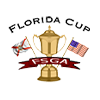Written by: Darin Green, Senior Director of Rules & Competitions
We have all seen the videos of Tiger Woods impressively suddenly stopping his downswing after a distraction mid-swing. You may have also seen a video of Kevin Na deciding mid-swing that he did not want to strike the ball and purposely swing well above the ball. Those videos did not count as stokes against their scores or any penalty strokes.
In the Rules of Golf, the definition of a “stroke” is summed up as the forward movement of the clubhead made to strike the ball (intent), but if the player decides during the downswing, not to strike the ball and successfully avoids striking the ball by either stopping the clubhead before it reaches the ball or deliberately missing the ball, it is not a stroke. Additionally, if the player had no intention to strike the ball, like during a practice swing, and the player accidentally makes contact with the ball, it does not count as a stroke; however, there is usually a penalty for causing your ball to move and the ball must be replaced (an exception exists on the putting green in accidental circumstances).
In an FSGA tournament recently a player was on the putting green preparing to make a stroke. The player addressed the ball and started his swing and the clubhead began moving forward towards the ball. Then a bird swooped in distracting the player, and he tried to stop his swing; however, the clubhead still made contact with the ball moving it a few feet. The player asked for a ruling. The Rules Committee determined that since the player started the forward movement of the clubhead with the intention of making a stroke, but he was unsuccessful in avoiding the ball, the stroke counts and he must play the ball as it lies.
If the player did not start the forward movement of the clubhead and accidentally caused his ball to move on the putting green, there would have been no penalty and the player must replace the ball.
The key point in this ruling is whether or not the clubhead was moving forward with an intention to strike the ball for a stroke and whether or not the attempt to stop the stroke was successful or unsuccessful. Unfortunately for the player, he was unsuccessful in stopping the stroke, so the stroke must count and the player must play the ball from its new location.
There are a lot of nuances in the Rules and you must carefully evaluate all factors when making a ruling.





